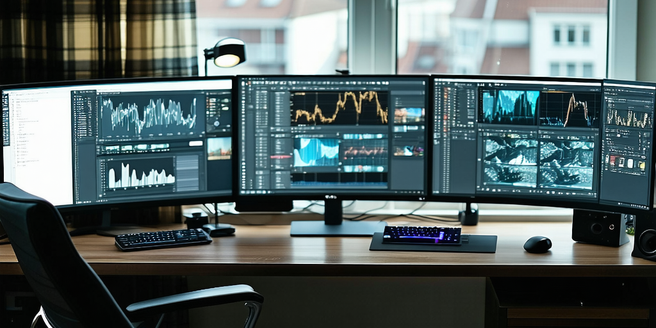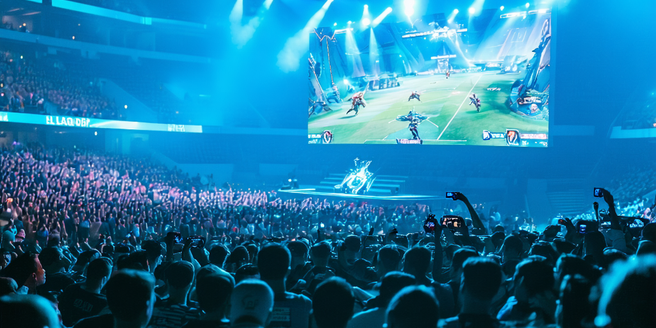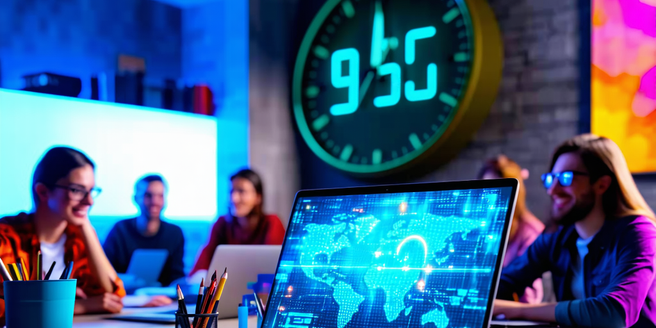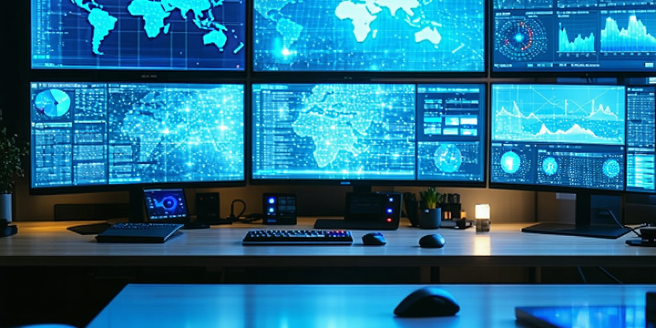
E-sports Platforms And Streaming Technologies
E-sports platforms have experienced significant growth due to advancements in technology, increased global interest in competitive gaming, and a surge in the number of gamers. Leading platforms such as Twitch, YouTube Gaming, and Facebook Gaming serve as cultural hubs where players and fans interact in real-time. These platforms are not only venues for professional gaming but also foster community building and engagement, offering features that traditional sports struggle to match. Streaming technology is crucial in this environment, offering high-quality, low-latency broadcasts and interactive elements like live chat and multiple camera angles, enhancing the viewer experience. Platforms compete on features, user experience, and audience interaction, with Twitch known for community-driven content, YouTube Gaming for integrated video experiences, and Facebook Gaming for its social media integration. As digital interactions become increasingly important, E-sports platforms are poised to continue evolving, with potential innovations such as virtual and augmented reality set to create even more immersive viewing experiences.

Digital Art And Nfts
Digital art, bolstered by Non-Fungible Tokens (NFTs), is reshaping visual content creation and ownership. NFTs authenticate digital creations on blockchain platforms, offering artists new revenue models and intellectual property protection. As digital tools democratize art, NFTs enable direct global access to artworks, breaking traditional market barriers and introducing innovative valuation structures. Blockchain technology ensures security and authenticity, giving artists control and royalties from secondary sales. This digital evolution fosters greater creativity and participation, envisioning a future where digital art influences cultural trends and economic landscapes, with emerging opportunities in the metaverse. However, addressing intellectual property and environmental concerns will be crucial for sustainable growth.

Tech-driven Fitness Equipment
Technology's integration with fitness is revolutionizing gym gear, wearable tech, home fitness machines, and personalized training. Gym equipment now features smart solutions like interactive screens and auto-adjusting resistance, providing real-time performance metrics and customized workouts, boosting motivation and efficiency. Wearable tech, including fitness trackers and smartwatches, offers real-time insights, GPS features, and personalized coaching, enhancing workout accountability and effectiveness. Innovations in home fitness machines have enabled compact, smart designs with interactive features, making home workouts space-efficient and engaging. AI plays a crucial role in personalized training, offering tailored routines and virtual coaching by analyzing user progress. Future trends in fitness technology include VR and AR for immersive experiences, AI-driven nutrition apps, advanced sensor integration in clothing, and cloud-based data sharing for collaborative workouts. These advancements blur the lines between technology and fitness, making workouts more personalized, efficient, and engaging.

Food Tech Industry Developments
Emerging trends in food technology are revolutionizing the food industry, focusing on healthier, sustainable, and convenient options. Key developments include plant-based alternatives, personalized nutrition through AI, and enhanced food traceability. Robotics, automation, and minimal processing techniques are improving efficiency, while fermentation technology enhances flavor and nutrition. Innovations in food production, such as vertical farming, precision agriculture, and biotechnological advancements like CRISPR, are boosting sustainability and efficiency. IoT integration in smart kitchens is transforming the culinary experience by optimizing energy use, reducing food waste, and offering enhanced convenience. Sustainability is at the forefront, with eco-friendly solutions like upcycled food products, edible packaging, and regenerative agriculture driving the industry towards a greener future. The development of alternative proteins, such as plant-based, cultured meat, and insect proteins, is set to revolutionize global protein consumption with sustainable options.

Blockchain Applications
Blockchain technology is revolutionizing several sectors by enhancing transparency, security, and efficiency. In financial services, blockchain facilitates cryptocurrencies, enabling secure peer-to-peer transactions and fostering innovation in decentralized finance (DeFi). The technology also transforms supply chain management with improved traceability and reduced fraud risks, benefiting industry transparency and operation efficiency. In healthcare, blockchain ensures data integrity and patient privacy, enabling secure data sharing and enhancing care coordination. For real estate, blockchain streamlines transactions with smart contracts, reducing costs and barriers for investors. Additionally, blockchain promises to enhance voting systems by safeguarding electoral integrity and improving democratic processes. Across these sectors, the adoption of blockchain paves the way for increased efficiency, security, and accessibility on a global scale.

Digital Nomad Culture
The rise of the digital nomad lifestyle is driven by the demand for flexible work environments and the advancements in technology enabling remote jobs. Seeking adventure, cultural experiences, and cost-effective living, more professionals are embracing this trend. The pandemic has further accelerated the shift to remote work, offering a diverse array of opportunities, from entrepreneurship to traditional roles. Key benefits include flexibility, improved work-life balance, global networking, and creative enhancement. However, digital nomads face challenges like maintaining stable internet, overcoming isolation, and managing travel-related logistics. Leveraging tools like project management software, establishing routines, and using co-working spaces can mitigate these issues. Top destinations for digital nomads in 2024 include Lisbon, Chiang Mai, Bali, Mexico City, and Tbilisi, each offering unique benefits of community, cost efficiency, and connectivity.

Digital Health Trends
Emerging technologies in digital health are revolutionizing healthcare by improving delivery and patient outcomes. Innovations like telehealth platforms, remote patient monitoring, and wearable technology facilitate real-time health management. Blockchain ensures secure data exchanges, while AI and machine learning enhance diagnostics and administrative efficiency, paving the way for personalized medicine. Telemedicine removes geographical barriers, enhancing accessibility and easing facility burdens. However, data privacy concerns demand stringent protections to maintain trust. Wearable technology empowers individuals with real-time health tracking for informed lifestyle choices and chronic condition management. As these technologies evolve, they promise to create a more inclusive, efficient, and personalized healthcare landscape.

Collaboration Tips For Remote Teams
Remote work introduces unique dynamics distinct from traditional office settings. Success hinges on acknowledging these differences and adapting through effective communication and collaboration strategies. Key to navigating dispersed teams across time zones is leveraging asynchronous communication tools and understanding cultural differences to enhance collaboration. Establishing clear communication channels is vital, utilizing a mix of synchronous and asynchronous tools to bridge gaps and maintain seamless interaction. Using collaborative tools effectively means selecting the right tools and providing adequate training. Setting and managing expectations involves clear role definitions and regular feedback loops, fostering accountability. Building trust and team cohesion requires open communication and transparency, with a focus on celebrating team accomplishments to strengthen unity. Regularly reviewing processes ensures team agility and efficiency, fostering an adaptable and resilient remote work environment.

E-sports And Streaming Innovations
The rise of E-sports signifies a major transformation in competitive gaming, with titles like League of Legends, Dota 2, and Fortnite becoming prominent platforms for professional play. E-sports has evolved into a thriving industry, offering significant opportunities for both gamers and businesses. Major tournaments attract millions of global viewers, while players gain recognition as legitimate athletes. This shift from casual gaming to professional E-sports has been driven by technological advancements, improved online connectivity, and greater cultural acceptance. The dynamic and expanding E-sports community promises an exciting future in competitive gaming.

Consumer Preferences In Wearable Fashion
Wearable fashion trends have evolved from basic digital watches to advanced smartwear, reflecting personal style and technological integration. With the incorporation of smart fabrics and responsive clothing, wearables have become both functional and expressive. Technology plays a crucial role in influencing consumer choices, with innovations like IoT and AI enhancing user interaction and customization. Eco-friendly designs are also gaining popularity due to increased consumer awareness of sustainability. Cultural influences are shaping wearable trends, blending heritage with modern aesthetics. Consumers favor multifunctional designs that merge fashion with practicality. The future trends in wearable fashion anticipate enhanced AI integration, smart fabrics, and augmented reality, promising an era where digital and physical experiences converge.

Digital Escape Rooms For Teams
Digital escape rooms are a modern way to enhance team building, offering a virtual setting that encourages collaboration and problem-solving from any location. These interactive experiences require effective communication and strategic thinking, fostering teamwork and camaraderie. Digital escape rooms can be tailored to fit specific team dynamics and strengths, promoting an enjoyable and memorable team-building experience that strengthens communication and trust. Selecting the right theme for a digital escape room is crucial for maximizing engagement. Consider team interests and puzzle complexity to ensure a captivating and suitable experience for all participants. Utilizing the right hosting platforms and tools, such as Escape Room Maker or Enchambered, can facilitate a seamless escape room setup, enhancing communication and the overall experience. A detailed setup process, including a test run and clear guidelines, ensures a successful virtual escape room. Measuring team performance through communication, decision-making, and time management during these activities provides insights for improving future team-building efforts, contributing to a positive team culture.

Future Of Job Interviews
The job interview landscape is rapidly evolving with a shift toward remote and virtual platforms, enhancing opportunities for global candidates and offering companies access to a broader talent pool while reducing costs. This transformation is accompanied by the growing application of AI and automation in the recruitment process, streamlining and adding objectivity to candidate evaluation while retaining the essential human element. Employers are increasingly valuing skills over experience, emphasizing adaptability and problem-solving abilities over past job titles, resulting in more inclusive hiring practices. Gamification is also revolutionizing candidate assessments by incorporating engaging, game-like elements that provide real-time insights into cognitive and behavioral competencies. Lastly, soft skills such as communication and emotional intelligence are becoming as critical as technical skills, shaping the future of effective teamwork and leadership.